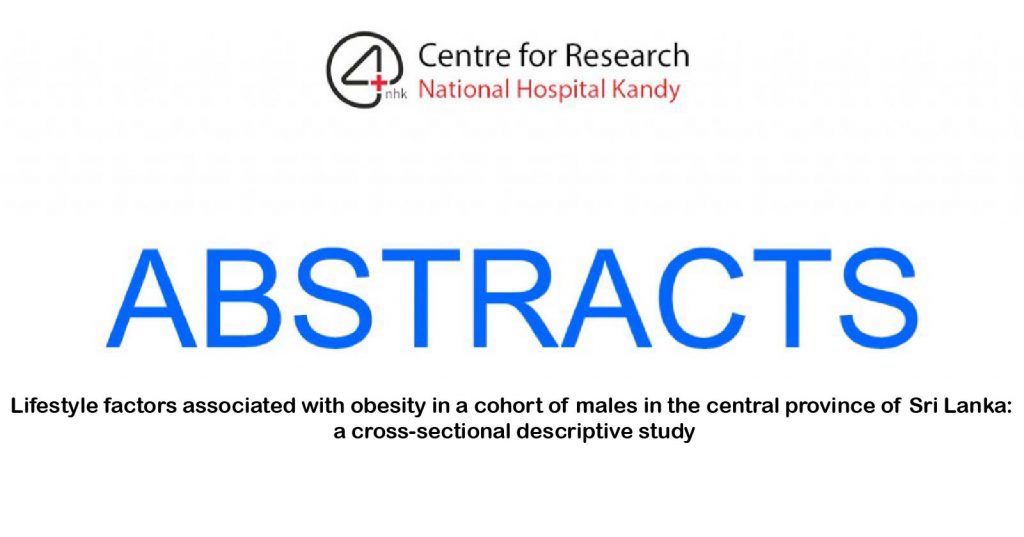Free PMC article
Abstract
Background: Obesity has become a global epidemic. The prevalence of obesity has also increased in the South Asian region in the last decade. However, dietary and lifestyle factors associated with obesity in Sri Lankan adults are unclear. The objective of the current study was to investigate the association of dietary and lifestyle patterns with overweight and obesity in a cohort of males from the Central Province of Sri Lanka.
Methods: A total of 2469 males aged between 16 and 72 years ([Formula: see text]) were included in the study. The sample comprised individuals who presented for a routine medical examination at the National Transport Medical Institute, Kandy, Sri Lanka. The Body Mass Index (BMI) cutoff values for Asians were used to categorize the participants into four groups as underweight, normal weight, overweight or obese. The data on dietary and lifestyle patterns such as level of physical activity, smoking, alcohol consumption, sleeping hours and other socio demographic data were obtained using validated self-administered questionnaires. Multinomial logistic regression model was fitted to assess the associations of individual lifestyle patterns with overweight and obesity.
Results: The mean BMI of the study group was 22.7 kg m-2 and prevalence rates of overweight and obesity were 31.8 and 12.3%, respectively. Mean waist circumference of the participants was 78.6 cm with 17.1% of them being centrally obese. After adjusting for potential confounders, weight status was associated with older age (P < 0.0001), ethnicity (P = 0.0033) and higher income (P = 0.0006). While higher physical activity showed a trend for being associated with lower odds of being obese (odds ratio: 0.898 – confidence interval: 0.744-1.084), alcohol intake, consumption of fruits, level of education, sleeping hours, smoking, consumption of fish, meat, dairy, sweets or fried snacks were not significantly associated with the weight status.
Conclusion: The high prevalence rates of overweight and obesity in working-age males is a threatening sign for Sri Lanka. Since the prevalence rate is higher in certain ethnic groups and higher-income groups, targeted interventions for these groups may be necessary.
Keywords: Diet; Lifestyle factors; Obesity; Overweight; Physical activity; South Asia; Sri Lanka.

